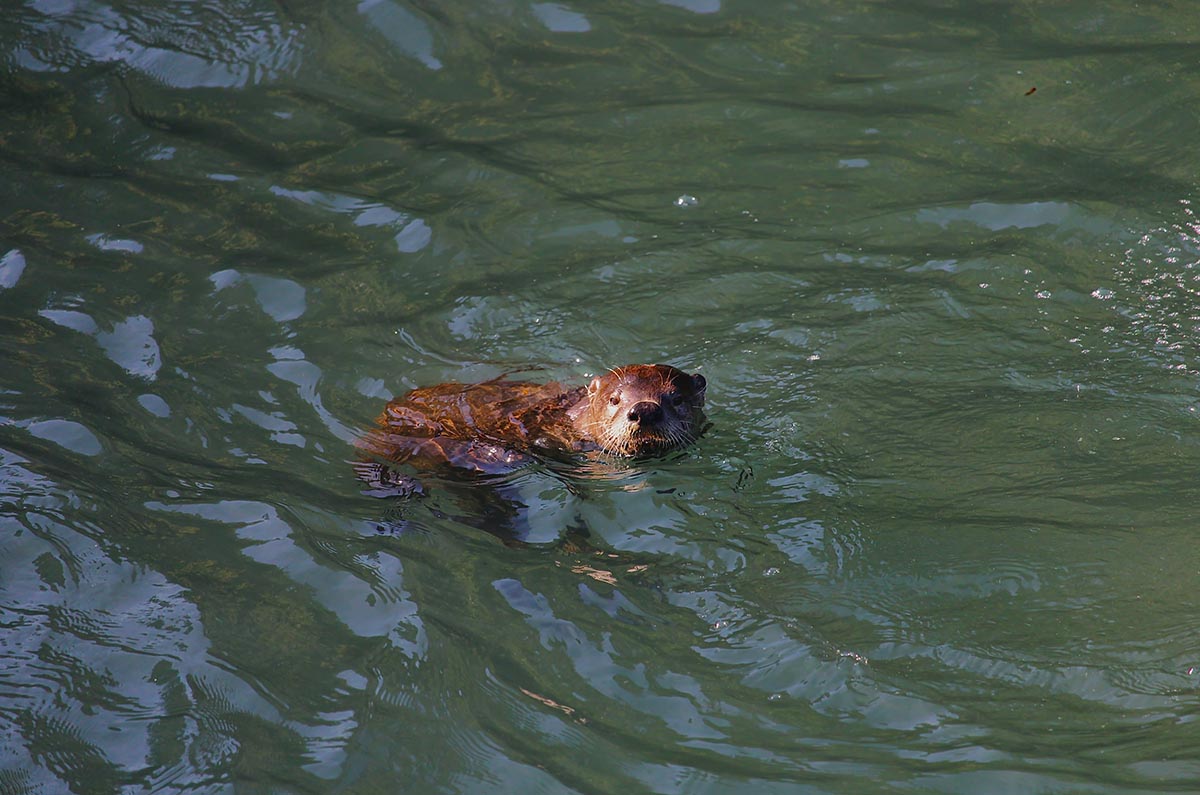When you think of Texas critters, certain wildlife icons immediately jump to mind—armadillos, Texas horned lizards, Mexican free-tailed bats. Although found plenty of places across the U.S., rattlesnakes and white-tailed deer also evoke a distinctly Texas vibe. Indeed, Texas is rich with a wide variety of wildlife but the thought of some making their home here seems entirely foreign. Beavers and otters, for example, don’t conjure visions of the Lone Star state. They’re building their dams and frolicking in the water in woodsy, rain-soaked places like Oregon not Texas, right? Wrong. Beavers and otters are Texas natives that can be found in rather surprising numbers in their home state.
Otters in Texas
A Landmark client in Fayette County (county seat is La Grange) recently spotted a river otter. These impossibly cute swimming weasels are notoriously shy which is why they may not be seen as often as their populations in the state would indicate. In 2010, Texas Parks and Wildlife Department (TPWD) heralded the return of river otters to Texas waterways. According to TPWD: “Historical range maps have shown in the past otters occurring from East to Central Texas, but too much trapping in the past limited them to the eastern quarter of the state. Department reports now show that the animals are returning to their historic range.” Many of us have seen the adorable photos and videos of otters floating on their backs (sometimes in an abundance of cuteness, holding hands)—those are sea otters. While river otters, the otters found in Texas, may be found around the salty waters of the Texas Gulf Coast they are distinct from their much larger cohort. Male sea otters can weigh up to 90 pounds while male river otters typically reach around 30 pounds (female river otters weigh around 10-20 pounds). Unlike back-floating sea otters, river otters stay belly down with most of their bodies submerged. River otters are carnivores with fish being their dietary mainstay but, as described by Texas Wildlife Association (TWA), “they will also eat other aquatic wildlife such as crustaceans like crabs and crawfish, frogs, turtles, insect larvae and occasionally small birds and mammals.” River otters make their homes in dens near the edge of water and use fallen logs, tree roots, and rock piles for shelter. They will also take over beaver lodges. An unusual fact about river otters from TWA: “they actually have an area on land where they ‘go’ called a latrine site. A latrine is a simple toilet. A family or social group of otters all use the same latrine.”
Beavers in Texas
Beavers may be more common in Texas than many of us realize. According to TPWD: “Beavers live along many wooded rivers, lakes, and streams in Texas, but their highest populations are found in the northeastern part of the state. Legal trapping efforts help keep their numbers under control.” These largest rodents in North America, live in lodges—dams—that they construct on the edge of or farther out into water. The compulsion to build dams apparently is not limited by location. A wildlife rehabilitation specialist with a popular TikTok account has been documenting a rescued beaver currently living with her. At https://www.tiktok.com/@beaverbabyfurrylove you can watch videos of a beaver building “dams” in a human’s house with paper towels, shoes, stuffed animals, and toilet plungers. In the wild, without toilet plungers, along with grass, rocks, and mud, dams are built with trees and branches that beavers cut using their powerful front teeth. As noted by Texas A&M Agrilife Extension Service’s “Managing Beaver Damage,” these dams are helpful to an ecosystem as they “stabilize creek flow, slow runoff and create ponds which benefit fish, furbearing animals and other wildlife.” But, “when a beaver’s modification of the environment comes in conflict with man’s objectives, the results may be more damaging than beneficial…Most of the damage caused by beavers is the result of bank burrowing, dam building, tree cutting or flooding.” A beaver advocacy group, Worth a Dam, offers a different and expanded take on some beaver homes in Texas thanks to the typically warmer weather:
“Many are surprised to learn that beavers can be found in the headwaters of the Guadalupe River because they don’t see the typical beaver dams or lodges associated with the furry engineers. In colder regions, beavers live in lodges made of sticks and mud and enter and leave them through underwater tunnels. They build dams to surround the lodge with water as a means of protection from predators and to keep the lodge entrance ice-free…In contrast, southern beavers in Texas typically do not build dams or lodges and instead burrow into the banks of streams or lakes. Burrows examined in the Rio Grande in Big Bend were quite large; high enough to stand up in and about 30 feet long.”
To learn much more about beavers, be sure to check out TPWD’s beaver resource page dedicated to this “furry hunk of homeliness,” including their multi-step grooming routine of combing the fur then oiling the fur. If beavers are considered homely it’s certainly not for lack of trying. Click here to read.
Photo, above, by Kendra Young on Unsplash









